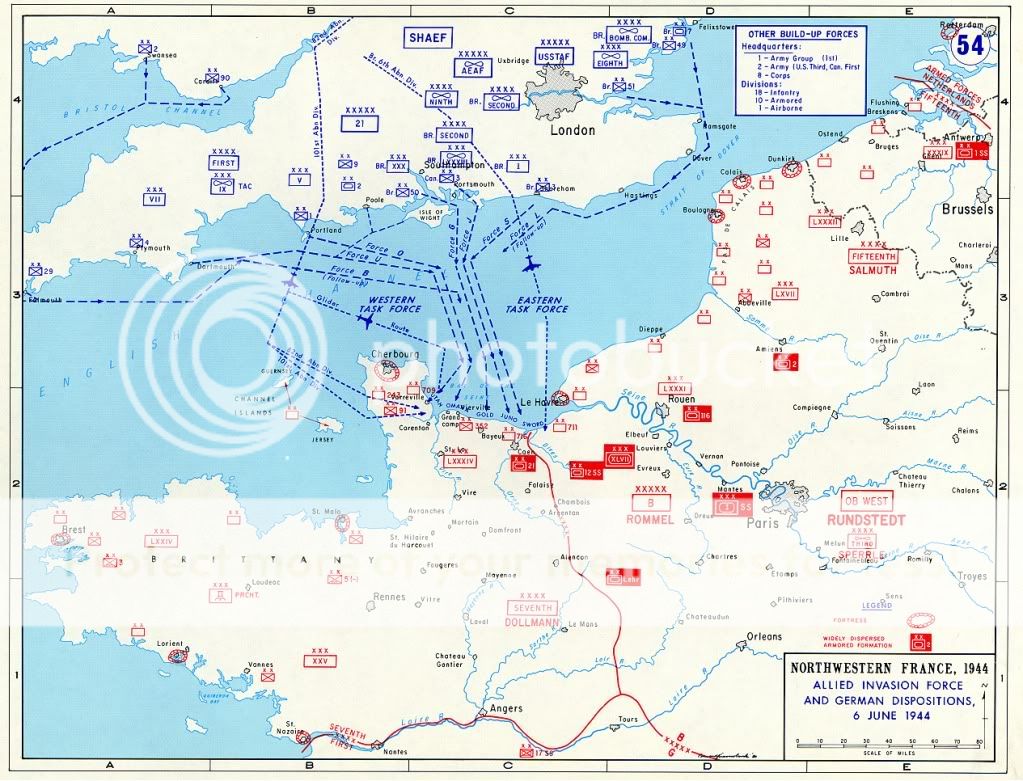One of the greatest battle in the history of World War II.
Operation Overlord was the codename for invasion of Europe by Allied forces.
It is the largest and greatest seaborne invasion ever assembly.
The invasion fleet, from 8 different navies, comprising 6,939 vessels :
1,213 warships, 4,126 transport vessels, 736 ancillary craft and 864 merchant vessels.
The invasion began with an large overnight airborne invasion inland by
23,000 mens from US 82nd, 101st Airborne Divisions and British 6th Airborne Division,
follow by massive air and naval bombardments.
Battleships, cruisers and destroyers provide heavy shore bombardment and full fire support
beyond the suppression of shore defenses overlooking landing beaches
and support to break up enemy concentrations as Allies troops moved inland.
The Invasion 06 June 1944


































